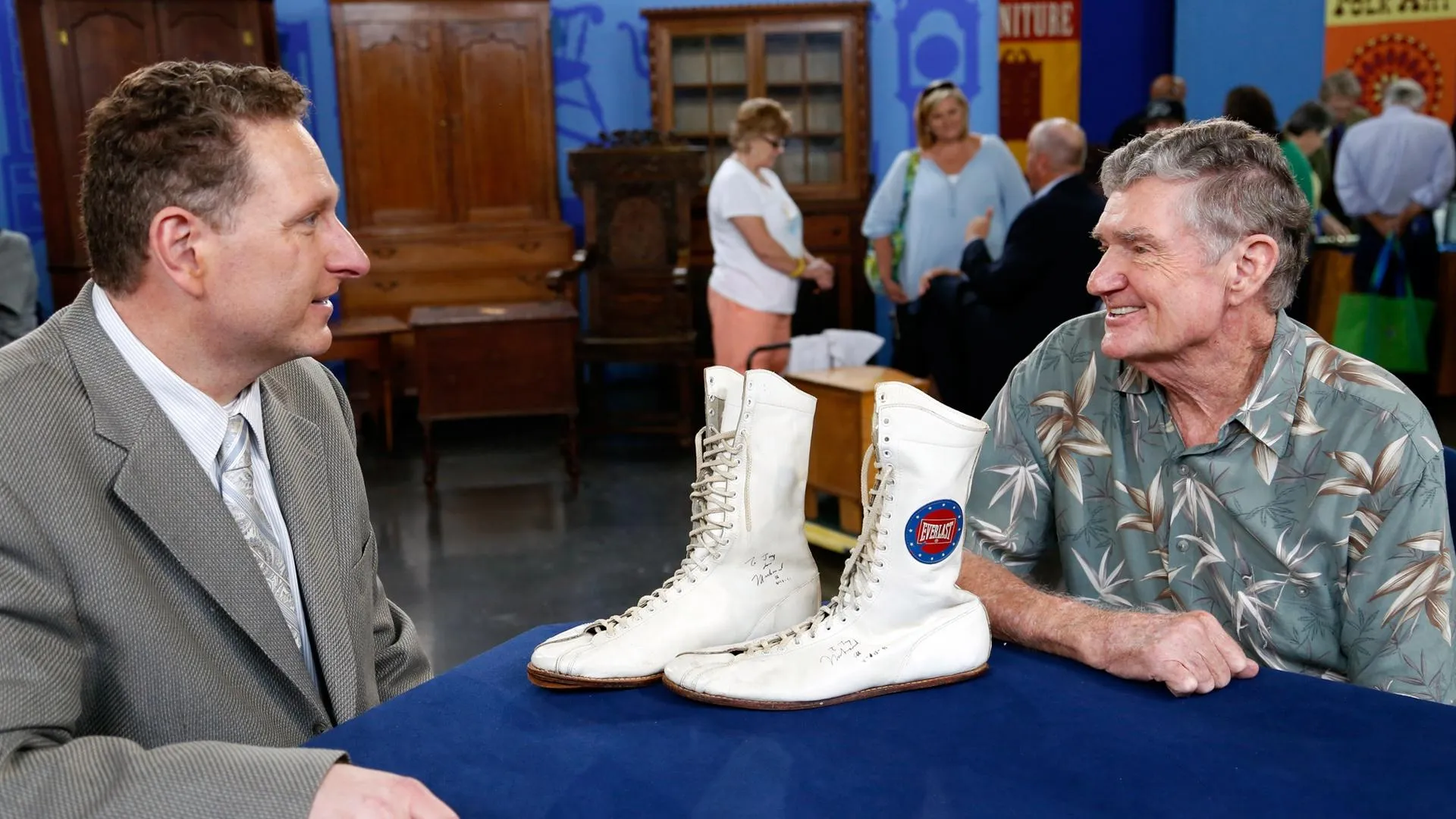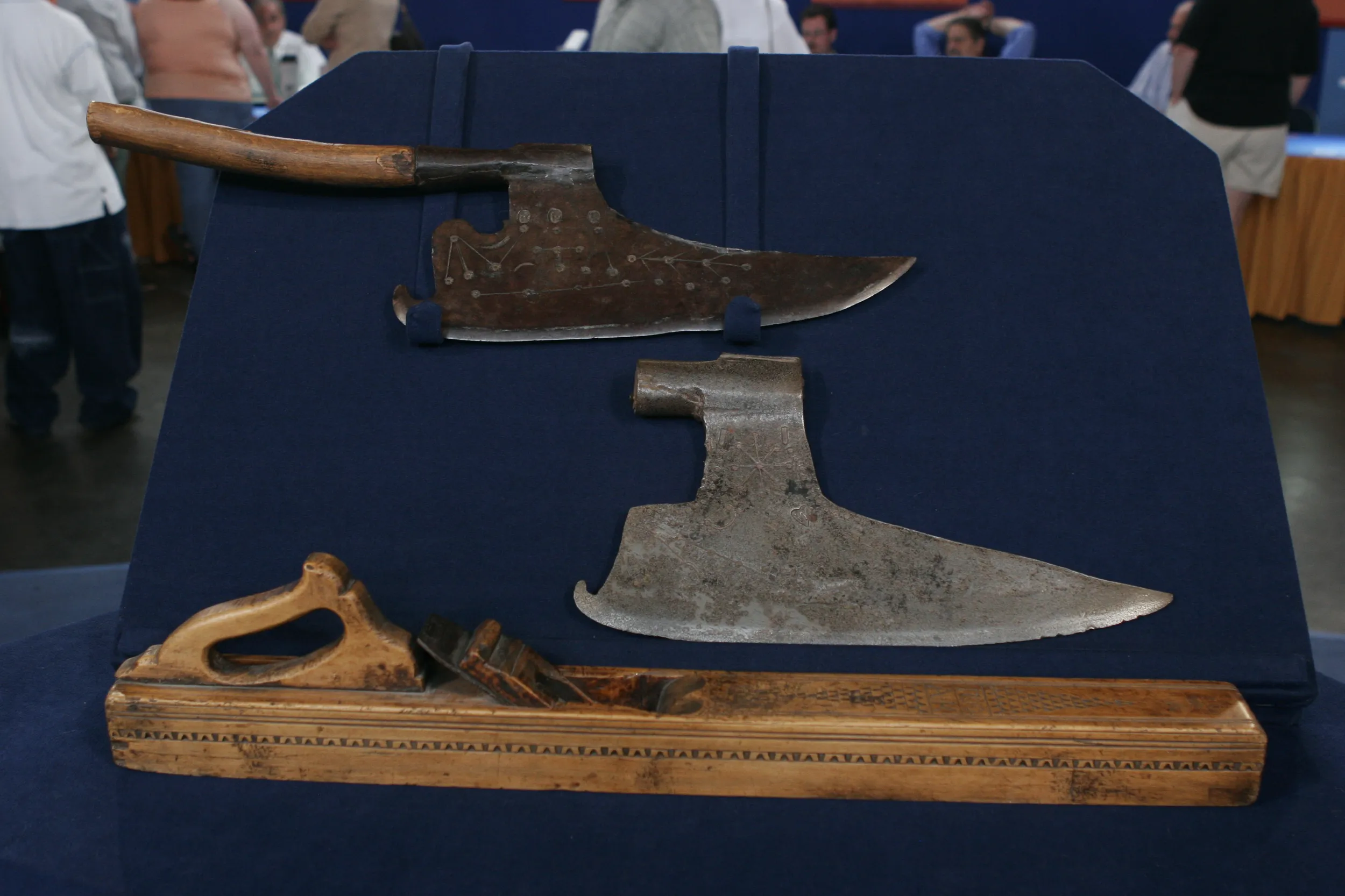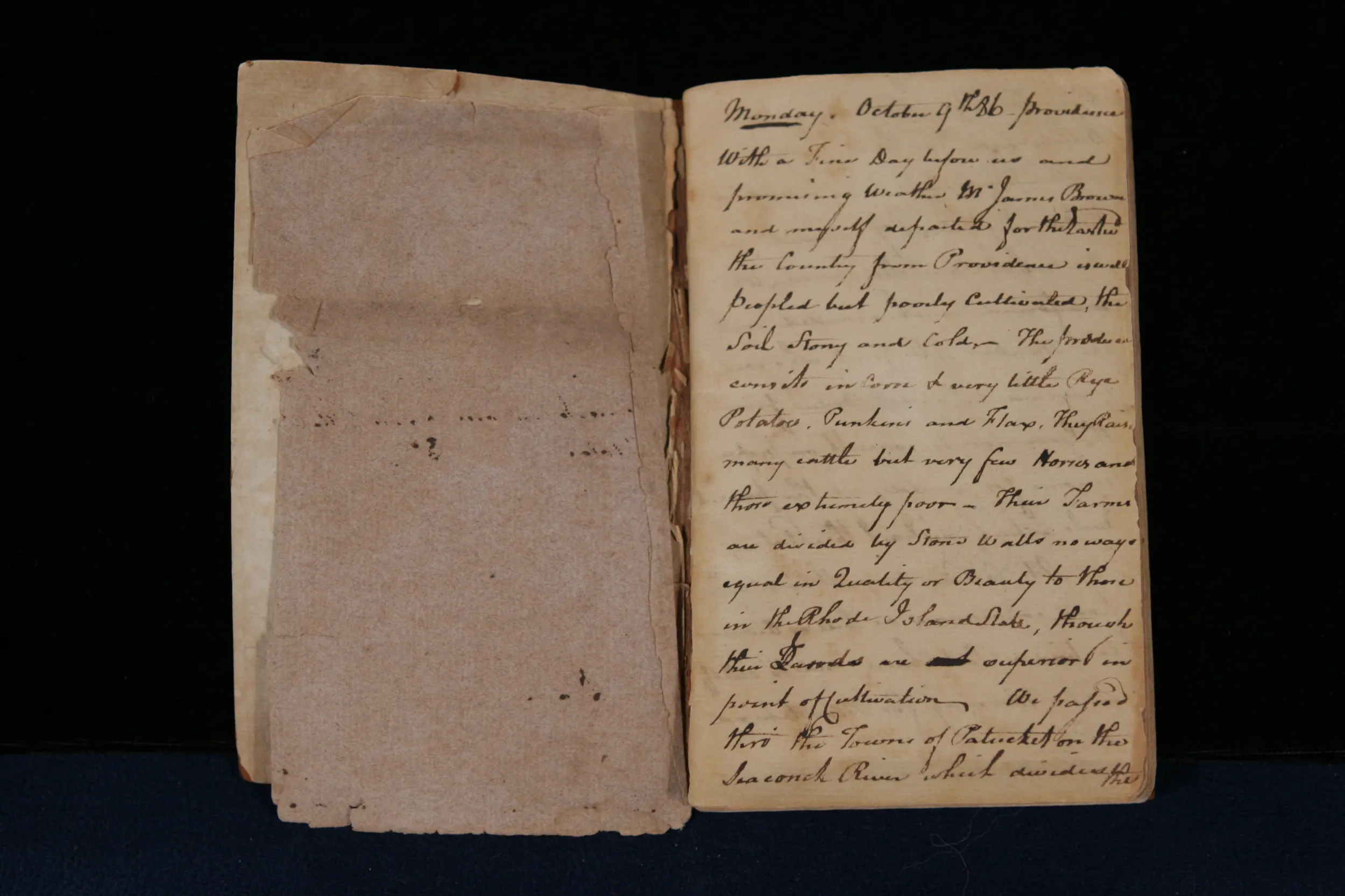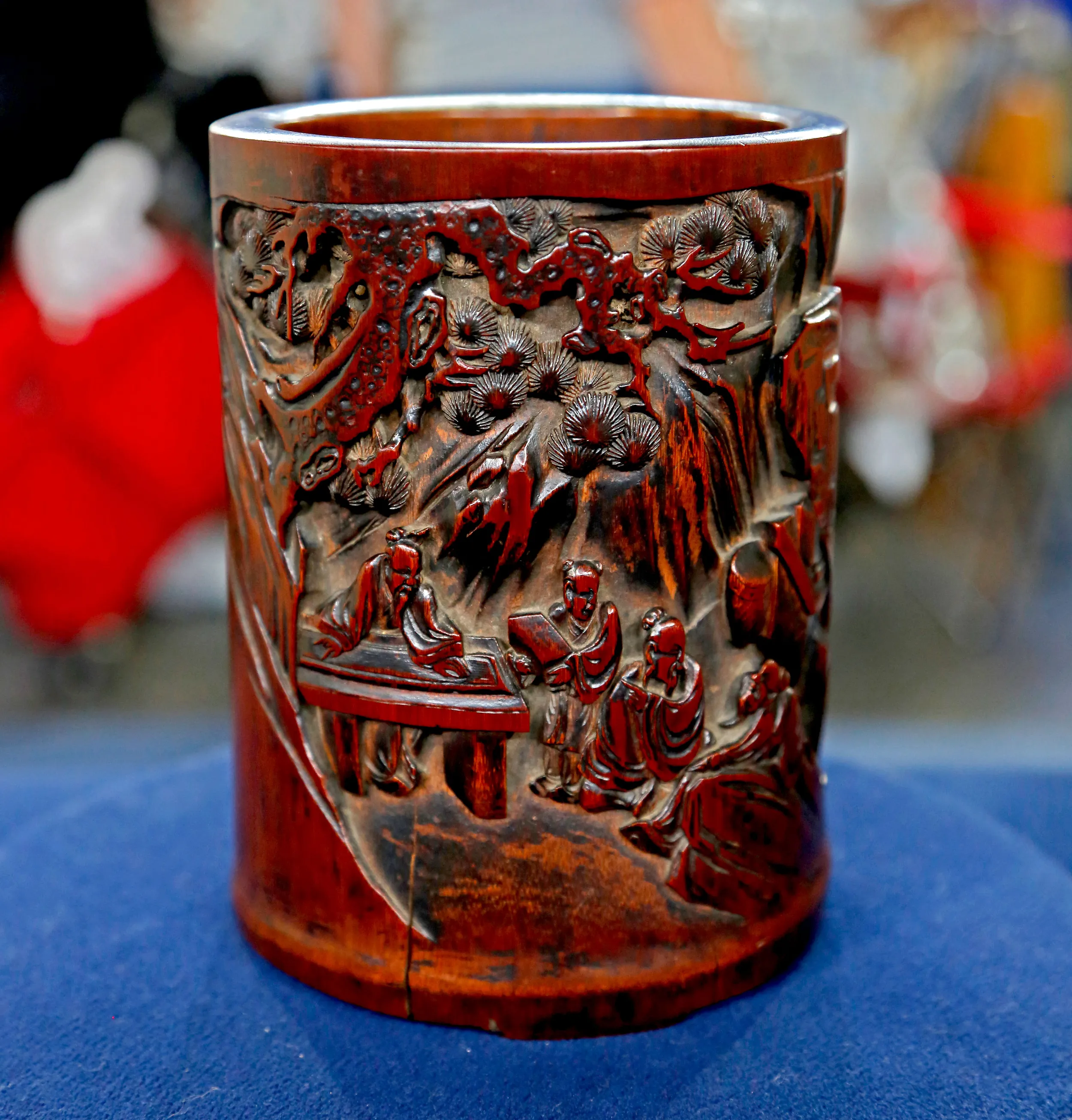GUEST: It's a Chinese brush holder, bamboo. I inherited it from my Great-Aunt Lois. And she was a doctor in the Yale in China program in the '30s.
APPRAISER: Now, in the letter is a great amount of detail relating to the brush pot. It does mention its classical Chinese name, the bitong, which is a brush pot, a brush holder. So it's correctly identified. It mentions in the letter-- and this is underlined, which I quite like-- that the antique dealer said, almost in parenthesis, that it was 200 years old. Now, there's a hint or an interpreted skepticism about that claim by the antique dealer. And it's good to know that there was that faith in the industry in 1937. However, what's mentioned in the letter is absolutely correct. It is a Chinese brush pot. It's carved bamboo. It is from the 18th century, likely from the Qianlong period, which is also mentioned in the letter. Do you know what your great-aunt may have paid for it?
GUEST: No.
APPRAISER: The reason I mention that is because in 1937, China was in such turmoil and such internal complication that not a great deal of attention was paid to antiques and the potential value on antiques. These were quite accessible. It's wonderfully carved, with scholars and attendants in pine groves. Typical motifs on bamboo brush pots. There's a wonderful texture to this canopy. The trees are highly reticulated and in-carved. The scholars have a wonderful patina. And when we mentioned patina, you mentioned to me that some of the dust had been wiped off it. You'd dusted it today.
GUEST: Yeah, lightly.
APPRAISER: Well, I'm glad it was just lightly.
GUEST: It's still dusty, I think.
APPRAISER: Well, leave dust there.
GUEST: Okay.
APPRAISER: The wonderful feature to this brush pot is its patina. We can see the patina in the recesses, wonderful faces. It's a beautifully carved object. As I tip it over, another characteristic of 18th century brush pots are these little bracket feet. On 18th century jade brush pots, you'll also see these bracket feet. So it helps us date and agree with the letter. Now, when appraising Asian works of art and ethnographic works of art, provenance is of major importance. The letter adds a great deal of credence and credibility to the dating of Qianlong period, 18th century. So it's wonderful when these objects have very, very strong provenance. And it does add perhaps 10%, 15% to the value. You've not had it appraised, you don't know the value?
GUEST: No.
APPRAISER: Speaking with my colleagues, a very, very conservative auction estimate would be $20,000 to $30,000.
GUEST: That's amazing. I told my wife I wouldn't fall out of the chair unless it was in that range, and I was joking. So I'm truly shocked.












